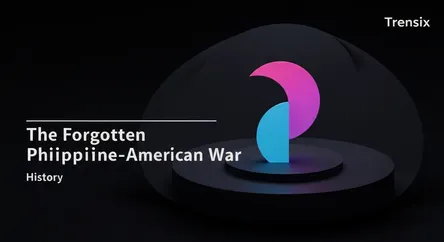History
The Forgotten Philippine-American War

An overview of the brutal, often-overlooked conflict that marked the U.S.'s emergence as a colonial power and shaped the future of the Philippines.
What is it?
The Philippine-American War was a brutal armed conflict fought from 1899 to 1902 between the United States and Filipino revolutionaries. After defeating Spain in the Spanish-American War, the U.S. acquired the Philippines for $20 million via the Treaty of Paris. However, Filipino nationalists, led by Emilio Aguinaldo, had already declared independence from Spain and established the First Philippine Republic. Refusing to trade one colonial ruler for another, they went to war when it became clear the U.S. intended to annex their nation. The conventional war quickly shifted to a grueling guerrilla conflict.
Why is it trending?
This war is a critical, yet often forgotten, chapter in American history that draws recurring interest. It represents a pivotal and controversial moment of U.S. overseas expansion and imperialism, sparking a fierce debate between imperialists and anti-imperialists back home. The conflict's brutality, which involved significant atrocities and immense civilian casualties, is a subject of ongoing historical re-examination. It is frequently revisited in discussions about the true cost of America's rise as a global power and the complexities of its foreign policy legacy in the Asia-Pacific region.
How does it affect people?
The war had a devastating human cost, with over 4,200 American and 20,000 Filipino combatants killed. An estimated 200,000 Filipino civilians died from violence, famine, and disease. The American victory dissolved the First Philippine Republic and began a nearly 50-year period of U.S. colonial rule, which profoundly shaped the Philippines. This led to the introduction of American democratic systems and English as an official language, but also the erosion of the islands' Hispano-Asian culture. For the United States, it cemented its status as a Pacific power but also created a contentious legacy that continues to influence Filipino-American relations and U.S. identity.